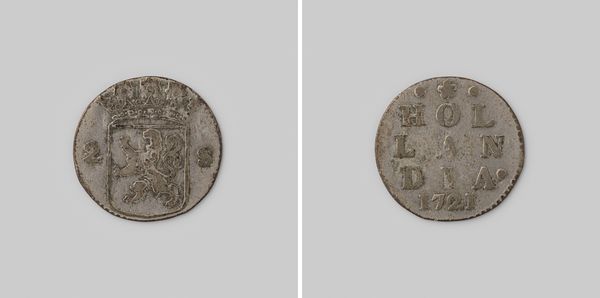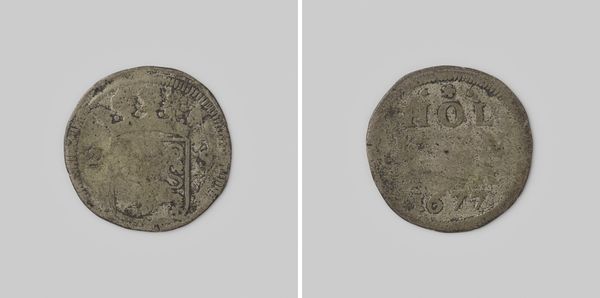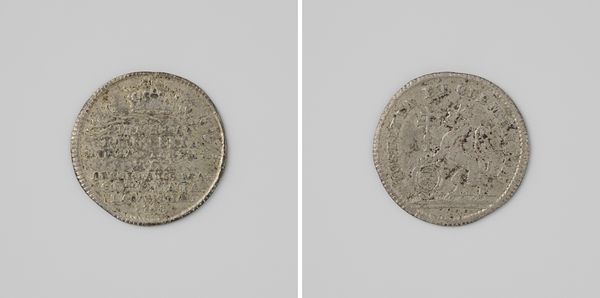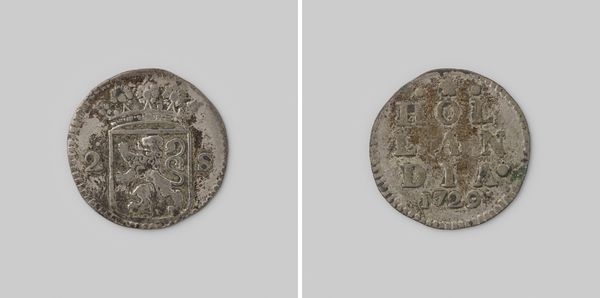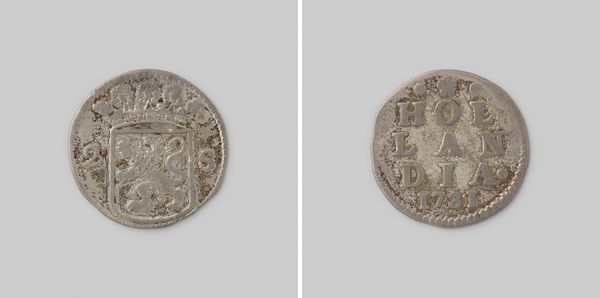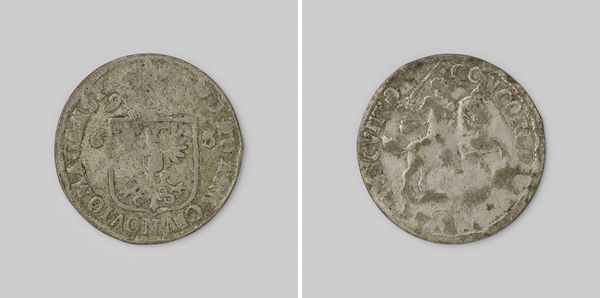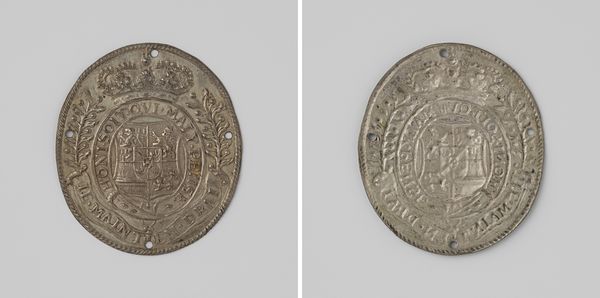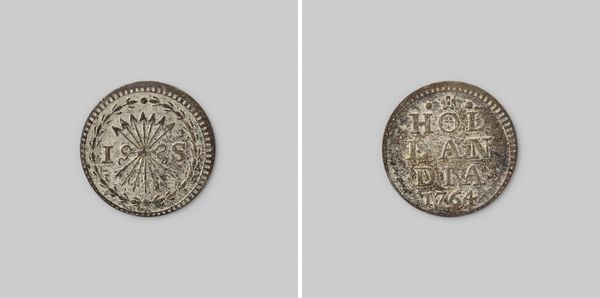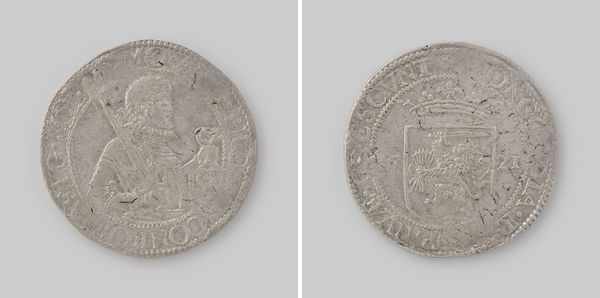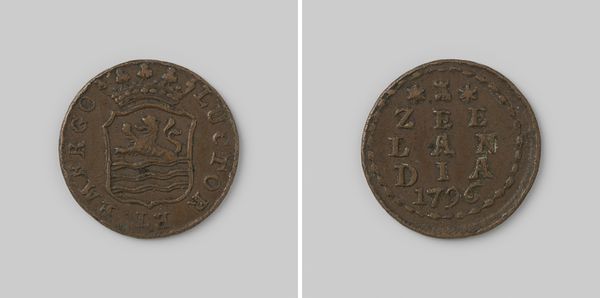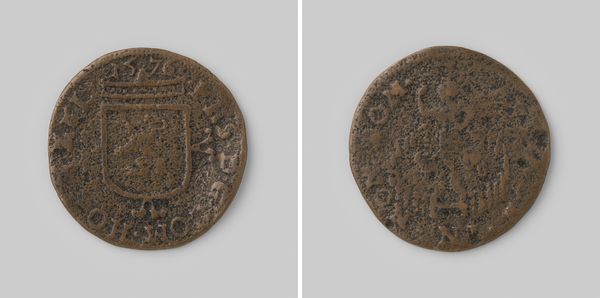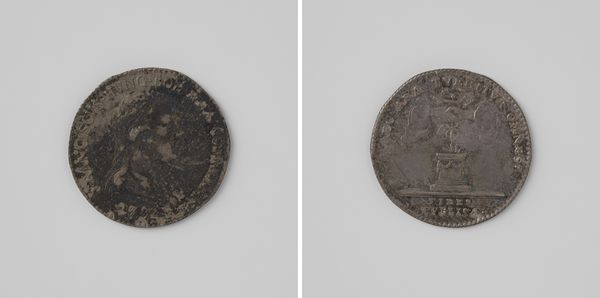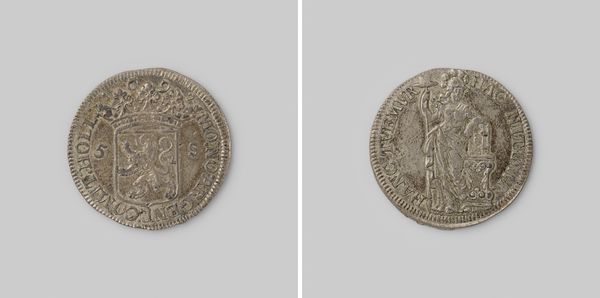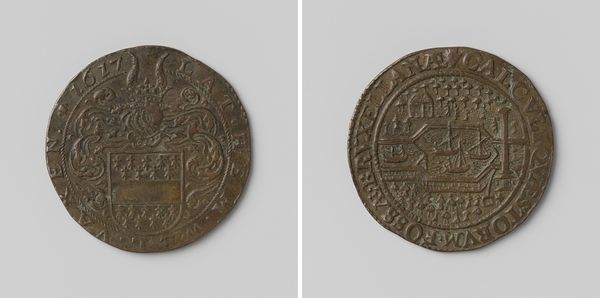
print, metal
#
portrait
#
dutch-golden-age
# print
#
metal
#
geometric
#
coin
#
realism
#
calligraphy
Dimensions: diameter 3.0 cm, weight 10.72 gr
Copyright: Rijks Museum: Open Domain
Curator: Let's spend a moment considering this 1829 Dutch Gulden, currently held at the Rijksmuseum. It features Willem I, King of the Netherlands. Editor: There's something so compelling about objects like this coin; to imagine its journey through time and pockets, and its reflection of power structures, both political and economic, during its use. Curator: Precisely. The medium, of course, is metal – the very materiality speaks to power, wealth, and control of resources. We must consider the socio-economic conditions under which this coin was minted, what were the resources available, and who controlled them? What does the mass production and dissemination of coinage, featuring the profile of the monarch, say about Dutch Golden Age principles of civic representation? Editor: And yet, despite its origins, it also looks fragile, ephemeral, almost like it could crumble at any moment, yet also like something dug out of the past; carrying whispers of the people who used it to buy bread or pay taxes, perhaps fueling clandestine meetings with smugglers or funding the ambitions of future philosophers. What an odyssey. Curator: The coin's geometric precision, coupled with calligraphy, served to disseminate messages of power and societal expectations to a vast population. Each inscription or profile was deliberately placed as a material object for propaganda, trade, and consolidation of Dutch national identity. It moved goods, labor, and belief systems across society, dictating societal value structures. Editor: Its design aesthetic, simple yet regal, reminds me of those stoic portraits in history books; you see the king’s controlled profile, while almost sensing a story beneath the surface; his dreams, the intrigues of court, maybe a hint of vulnerability hidden under all that metallic seriousness. Curator: Yes, but in doing so, we may forget about the artistry and craft of minting such coins during the period. From engraving to casting, and ultimately to its value assignment within its material constraints; we begin to unveil production processes often erased in art-historical narratives. How does that reassessment then reposition metalwork against so-called "finer arts," offering novel perspectives to consider objects often dismissed as decorative arts? Editor: Well, its worn surface and dull gleam have, for me, activated a story far beyond economics and manufacture: it brings ghosts to the party. That is a different, dare I say more romantic or melancholic story about power than perhaps its creators originally anticipated it communicating, now having had over two centuries to tell its stories and collect scratches and ghosts on its silvery surface. Curator: It brings out critical considerations around the production, dissemination, and consumption. That itself can offer avenues toward more robust discussions on art, power, society, and economic systems.
Comments
No comments
Be the first to comment and join the conversation on the ultimate creative platform.
